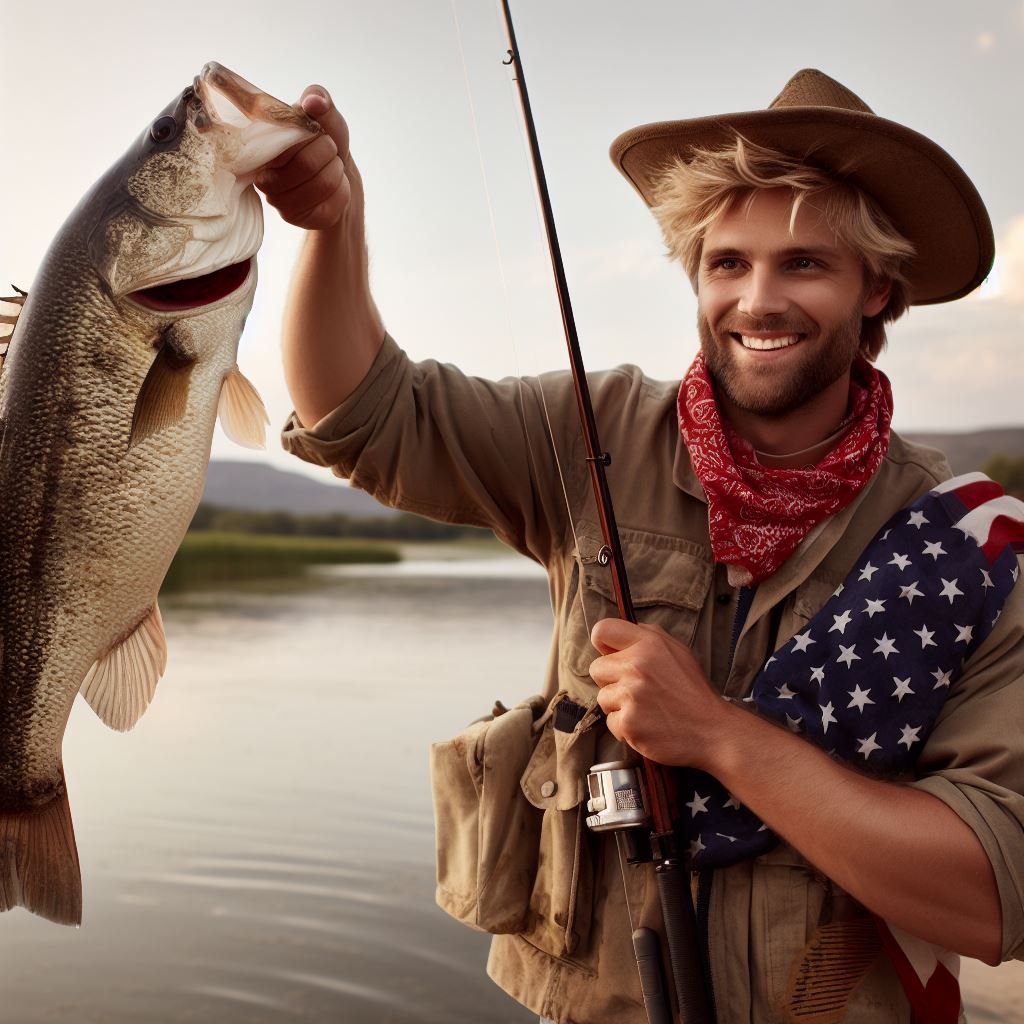Introduction
The fishing industry in the US plays a significant role in the economy and food supply.
This Section focuses on the different types of fisheries, including commercial and sport fishing.
The fishing industry in the US is a vital part of the nation’s economy and food supply.
It provides employment opportunities, supports coastal communities, and satisfies the demand for seafood.
Additionally, fishing contributes to recreational activities and promotes a connection with nature.
Within the fishing industry, there are various types of fisheries.
Two primary categories are commercial and sport fishing.
Commercial fishing involves catching fish and other marine species on a large scale for commercial purposes.
These activities are mainly driven by profit and the need to meet market demand for fish products.
On the other hand, sport fishing, also known as recreational or leisure fishing, focuses on the enjoyment of fishing as a hobby or sport.
It is typically done for leisure, entertainment, or competition purposes rather than for profit.
Sport anglers usually catch fish for personal consumption or catch and release them back into the water.
Both commercial and sport fishing contribute to the economy and the well-being of communities, but they differ in their objectives, methods, and impacts.
Understanding these different types of fisheries is crucial for the proper management and conservation of marine resources.
In the upcoming sections of this blog post, we will delve deeper into the dynamics, challenges, and benefits of these two types of fisheries.
By examining their distinctive features, we can appreciate their roles in the fishing industry and the impact they have on the environment.
Read: The Role of Foresters in U.S. Wildlife Habitat Preservation
Commercial Fisheries
Definition and characteristics of commercial fisheries
Commercial fisheries refer to the activities of harvesting and selling fish and other marine organisms for profit.
They involve large-scale operations conducted by professional fishermen.
The importance of commercial fisheries for the US economy
Commercial fisheries play a significant role in the US economy, providing jobs and income to thousands of individuals.
They contribute to the domestic and international trade of seafood.
Transform Your Career Today
Unlock a personalized career strategy that drives real results. Get tailored advice and a roadmap designed just for you.
Start NowTypes of commercial fishing methods
- Trawling: Fishing boats pull nets through the water to catch fish.
- Longlining: A main fishing line with numerous baited hooks is set to catch fish.
- Purse seining: Large nets are used to encircle and capture schools of fish.
- Gillnetting: Nets made of fine mesh are set to entangle fish by their gills.
Major fish species caught in commercial fisheries
- Tuna: Highly sought-after fish for its edible flesh and commercial value.
- Salmon: Anadromous fish that spawn in freshwater but live most of their lives in the ocean.
- Cod: Cold-water species known for its mild-flavored white meat.
- Shrimp: Small crustaceans highly valued for their sweet and succulent meat.
Regulation and management of commercial fisheries
- Federal regulations: The National Marine Fisheries Service enforces laws to protect and sustainably manage marine resources.
- Regional fishery management councils: These groups develop fishery management plans for specific regions to ensure resource conservation.
Commercial fisheries fuel the US fishing industry, contributing significantly to the economy and food supply.
Sustainability hinges on understanding and managing these fisheries effectively. Professionals, reliant on fishing for income, conduct large-scale operations.
They crucially generate jobs and boost domestic and international seafood trade.
Diverse fishing methods, such as trawling and longlining, suit different environments.
Tuna, prized for its market value, and salmon, anadromous and ocean-dwelling, are key catches. Cod, known for mild white meat, and shrimp, with sweet meat, are also targeted.
Federal and regional regulations, enforced by the National Marine Fisheries Service and regional councils, maintain sustainable practices, ensuring long-term viability and resource preservation for future generations.
Read: Public Perception vs. Reality: Debunking Forestry Myths

Gain More Insights: Networking for Animal Breeders: US Events and Shows
Sport Fisheries
Definition and characteristics of sport fisheries
Sport fisheries refer to recreational fishing activities conducted for leisure or pleasure rather than commercial purposes.
They involve individuals targeting various fish species as a recreational pursuit.
Importance of sport fisheries for recreational purposes and tourism
Sport fisheries play a crucial role in providing recreational opportunities for individuals, whether they are local residents or tourists.
Fishing trips can offer a way to relax, enjoy nature, and bond with family and friends.
Moreover, sport fishing has the potential to attract tourists, benefiting local economies.
Popular sport fishing techniques
- Freshwater fishing: This technique involves angling in freshwater bodies such as lakes, rivers, and streams. It is popular for targeting species like bass, trout, and catfish.
- Saltwater fishing: Saltwater fishing takes place in marine environments like oceans and seas. Anglers commonly pursue species like marlin, snook, and tarpon in saltwater fisheries.
Key sport fish species
- Bass: Largemouth and smallmouth bass are highly sought-after game fish known for their aggressive strikes and strong fighting abilities.
- Trout: Rainbow, brown, and brook trout are popular sport fish, favored for their elusive nature and unparalleled beauty.
- Marlin: Marlin are iconic oceanic predators sought after by sport fishermen due to their size, strength, and acrobatic displays.
- Snook: Snook are prized sport fish found in coastal regions, famous for their powerful runs and challenging fights.
Preservation and conservation efforts
- Catch and release practices: Anglers practice catch and release to promote sustainability by releasing fish back into the water, ensuring their survival and the continuation of the population.
- Bag and size limits: Regulations are in place to establish limits on the number and size of fish that can be harvested, preventing overfishing and preserving fish stocks.
- Fish habitat restoration initiatives: Efforts are made to restore and protect key fish habitats, such as wetlands and coral reefs, to ensure the viability of sport fisheries for future generations.
Sport fisheries provide not only recreational opportunities but also contribute to the conservation and preservation of fish populations and their habitats.
Anglers play an active role in promoting sustainable fishing practices and ensuring the long-term health of these valuable ecosystems.
Whether an angler seeks the thrill of catching bass in freshwater or embarks on an offshore adventure to target marlins in saltwater, sport fishing offers a unique and rewarding experience for both individuals and the environment.
Read: U.S. Foresters: Champions of Sustainable Timber Harvesting
Uncover the Details: Innovative Breeding Techniques Emerging in the US
Comparison between Commercial and Sport Fisheries
Economic differences
- Commercial fisheries generate significant revenue through the sale of fish and seafood products.
- Sports fisheries contribute to economic growth through tourism and recreational activities.
Environmental impacts
- Overfishing is a major concern in commercial fisheries, leading to depletion of fish populations.
- Habitat degradation can occur due to commercial fishing practices, such as bottom trawling.
Regulatory frameworks
- Commercial fishing requires permits and quotas to control the amount of fish harvested.
- Recreational fishing requires licenses and regulations to ensure sustainable practices and protect fish populations.
Collaboration between commercial and sport fishermen
- Commercial and sport fishermen engage in shared research efforts to understand fish populations and habitats.
- Cooperative initiatives between commercial and sport fishermen promote sustainable fishing practices.
In this section, we will compare commercial and sport fisheries in the United States based on various factors such as economic differences, environmental impacts, regulatory frameworks, and collaboration between commercial and sport fishermen.
Economic differences
Commercial fisheries play a crucial role in the economy by generating substantial revenue through the sale of fish and seafood products.
Transform Your Career Today
Unlock a personalized career strategy that drives real results. Get tailored advice and a roadmap designed just for you.
Start NowThe commercial fishing industry contributes to job creation and supports various sectors involved in the processing, distribution, and sale of fish products.
On the other hand, sport fisheries also have a significant economic impact.
They attract tourists and recreational anglers, who spend money on accommodation, equipment, and related services.
Sport fishing tournaments and events further boost local economies and support businesses in coastal communities.
Environmental impacts
Commercial fisheries often face concerns related to overfishing.
The extensive targeting of specific fish species can lead to their depletion, disrupting marine ecosystems and affecting the overall balance of fish populations.
Proper management strategies and regulations are necessary to prevent overfishing.
Additionally, certain commercial fishing practices can result in habitat degradation.
Bottom trawling, for example, involves dragging nets along the seafloor, which can damage sensitive habitats like coral reefs and seagrass beds.
To minimize these impacts, sustainable fishing methods and gear modifications are being developed and implemented.
Regulatory frameworks
Both commercial and sport fisheries operate under different regulatory frameworks to ensure sustainable practices and protect fish populations.
Commercial fishing requires permits and quotas, which are implemented to control the amount of fish harvested and prevent overfishing.
These regulations aim to maintain the long-term viability of commercially targeted species and protect their habitats.
Recreational fishing also has its own set of regulations.
Anglers are required to obtain fishing licenses to engage in fishing activities.
These licenses help fund conservation programs and enable authorities to enforce catch limits and size restrictions.
Such measures are crucial to ensure recreational fishing remains sustainable and does not negatively impact fish populations.
Collaboration between commercial and sport fishermen
Commercial and sport fishermen often collaborate on various fronts to promote sustainable fishing practices and conserve fish populations.
Both sectors engage in shared research efforts to better understand fish behavior, population dynamics, and the overall health of marine ecosystems.
This collaboration enhances scientific knowledge and helps in developing effective management strategies.
Transform Your Career Today
Unlock a personalized career strategy that drives real results. Get tailored advice and a roadmap designed just for you.
Start NowCollaborative initiatives also focus on promoting sustainable fishing practices through education and awareness campaigns.
Fishermen from both sectors work together to implement measures such as catch-and-release programs, selective fishing techniques, and habitat restoration projects.
By pooling their resources and knowledge, commercial and sport fishermen can contribute to the long-term conservation of fish species and their habitats.
In the end, commercial and sport fisheries have distinct economic differences, environmental impacts, regulatory frameworks, and collaborate on various initiatives.
Understanding these differences and promoting sustainable fishing practices is crucial for the long-term health and viability of fisheries in the United States.
Read: The History of Fishing in the USA: A Journey Through Time
Conclusion
Recap of the different types of fisheries in the US We explored both commercial and sport fisheries, noting their distinctions.
Importance of both commercial and sport fisheries for the nation These fisheries contribute to the economy, food supply, and recreational activities.
Call for responsible fishing practices and conservation efforts To ensure the sustainability of fish populations, it’s crucial to fish responsibly and support conservation initiatives.




